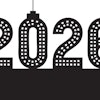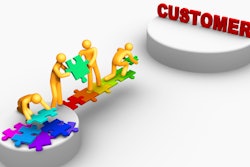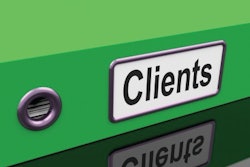What is the first thing that flashes into your mind when I ask you to name your company's most valuable asset? Many business owners typically respond with "Buildings, equipment, or cash in the bank."
Maybe you are wiser than the average bear and answered "Our customer list, brand recognition, employees, or our vendor partnerships."
Nowadays, when you take inventory you should put those four items at the top of your list.
During this rough patch of business, the companies who have developed strong relationships prior to 2009 will have a much better chance of surviving - several will even prosper.
Many people have lost faith and trust in our economy (especially in large institutions). During such tough times, price always becomes a bigger factor in purchasing decisions. The perilous part is that if your buyer does not have trust in a vendor, he may not buy at all.
Let me share a story of a dear friend of mine. For purposes of discussion we'll call her Sally.
Sally is a dog groomer. She is really feeling the pressure of the slowing economy. People are cutting back on their pet grooming.
When I was starting to advise her, I asked Sally for her customer list of e-mail and snail mail addresses. Can you believe she doesn't have either?!?!
Think about that for a moment...many folks admit that their pet is a true member of their family. Some will go as far as proclaiming that their dog is their best friend. (Not me, I have Ron for that.)
These people trust Sally to shampoo, trim and pamper their beloved pets and at most today she can produce only their names (the humans and the dogs) and phone numbers.
I am teaching Sally to not only stay in contact with her existing clientele but to give incentives for referrals. To do that she will need more than just phone numbers.
She will need to use several forms of communication besides traditional phone calls. Clients have different forms of preferred communication. Some prefer e-mail while others can be prompted by reminder post cards. Her marketing options are almost limitless. Sally will be "touching" her existing clients much more frequently in 2009.
Sally is developing a newsletter about pet grooming. It will include many facts regarding the benefits her service offers. She will include a coupon that will benefit her loyal customers as Ron recently wrote about creating a UVP or unique value proposition. Sally is creating hers as I write this. It will take some time but I'm convinced if she follows the plan to stay in contact with her clients she will get back on track.
What is the point to all of this jabber? You need to update your customer and prospect lists.
This is where you start to gather information so you can stay in contact with clients and prospects.
You need to bring all this information together in one place where you can analyze and expand the data. There are many good tools you can use to automate the information gathering process.
Most CRM (Contact Relationship Management) software programs will make automating this task easy. Some of the most popular are ACT. Goldmine, Maximizer, and Salesforce.com. QuickBooks and other accounting software programs have add-on programs or recommend supplemental integration with specific software. You will need to do your own evaluation to determine what is best for you.
Bring together as much personal information as you can. Delve past the basics of company, contact name, phone and address. Your goal is to learn as much as possible about your client and their family. Ask questions about a client's special interests, kids, hobbies, favorite sports teams, what schools they have attended, etc. the list goes on.
Now you need to bring in meaningful financial data. How much and what they buy. Which competitors also supply them and why.
These same methods apply to prospects as well. I have included some possible information that will be useful in analyzing all or part of a specific piece of the industry you are wooing.
Financial Data
- 2007 compared to 2008 sales (by service line)
- 2007 monthly sales comparison to 2008 monthly sales
- YTD Sales verse YTD quoted
- All sales people individual sales comparisons
There are many ways to build and maintain relationships. If you have a business that is not focused on being the low cost producer, you have probably been developing relationships for quite some time. The question I have for you is "Do you statistically measure your relationship quotients?"
We believe you can measure practically anything while minimizing the subjective impact. Just like financial data you can create a mathematical model that will give you a numerical value of the strength of your relationships based on measurable data. This unique approach is more than I can explain in the space provided but feel free to develop your own criteria and strength index. If you would like additional information on this method feel free to contact Ron or myself.
When a company is sold there is a value on "hard assets" as well as something we call "good will" or "blue sky." The good will usually is a perceived value of your customer list and your brand. However, with a loyalty relationship index you can predict what percentage of your clients will buy again in the future. How loyal are your customers? Do they look to you for unique solutions to their problems or do they strictly think of your service as a commodity?
Do they know ALL the services you perform? Starbucks is known for coffee. That is the emphasis of their brand. You probably wouldn't go there for a bottle of water. But they have other things that they are good at. Bakery products, tea and other drinks like chai and of course coffee and espresso machines along with a variety of mugs cups not to mention and tea presses and CD's.
These ancillary items generate gobs of additional revenue. The perception is they are of high quality like their fresh brewed products. Starbucks isn't the low cost producer. McDonalds and Dunkin Donuts would more likely fit that category. So if you ever stop in a Starbucks which is something I do often ask yourself what is the draw? Does Starbucks have a relationship with their customers?
You bet they do!
Now let me share an advantage you have over the Starbucks buyer. You do not have to wait for the consumer to come to your establishment to get their business. You can go out a look for them. If you have been building relationships you shouldn't have to look far for new or additional business.
So don't wait! Go out and take inventory and strengthen your relationships.




















